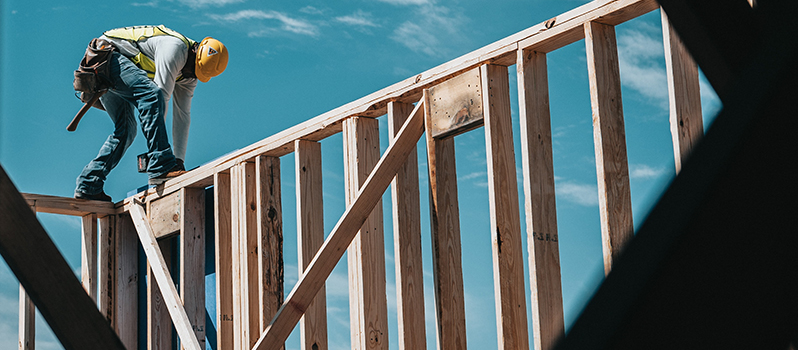
The Impact of Construction Costs
By Jeff Blevins, Manager of Property Loss Consulting & Steve Carroll, Property Loss Consultant
Soaring inflation, supply chain issues and labor and material shortages are putting heavy pressure on claims costs and creating a volatile, challenging environment for property insurers. We hear daily from mutual clients how this is playing out in real time in property claims they are handling. There are several common scenarios.
Increased Complexity and Volatility for the Adjuster
A recent claim involved a modern dairy barn measuring 184 feet by 264 feet, which was partially damaged by fire originating from a robotic barn cleaner. The insured had no alternative location to relocate his dairy herd to continue milking operations, so he moved the cows to one end of the structure that had minimal structural damage. The proposed repairs would have to be made to the damaged section while operations continued at the other end of the structure.
Early on, there were varying opinions of how much of the insulated metal roof required replacement, ranging from 33% to 100%. After consultation with multiple specialty contractors and experts, it was determined that 100% of the roof needed to be replaced. This had to be done in increments to allow operations to go uninterrupted.
The price of roof metal was subject to change on a weekly basis and availability was uncertain. Availability of the skilled labor required for repairs was also in question. Keeping the insured in business was the chief concern. It was imperative to know all the technical aspects and potential construction issues involved in repairing the building. Communicating with all parties involved was essential to ensuring the restoration period did not incur cost overruns or expose the dairy herd and operation to dangerous weather elements.
A claim with all these components is challenging in “normal times,” but it’s especially challenging in the recent economic climate. Only the adjuster’s attention to detail and excellent communication with the insured, contractors and experts over many months kept this claim moving to a positive resolution.
Original Estimates and Reserves Are Inadequate
As claims are open longer, costs continue to increase. Contractors are routinely submitting significant supplemental billing for cost overruns on projects that were agreed to six to 18 months ago. Reasons for these increases include delays in getting needed materials and price increases for the materials and labor. In many cases, these are legitimate reasons and should be considered by the adjuster.
In some instances, however, contractors are taking advantage of the current environment and economic conditions. They may have made commitments to price and completion times they had no intention of keeping. In these cases, it is important for the adjuster to seek evidence that the contractor has been working in good faith with the insured and insurer. They may be delaying because they know they can get away with it and charge more later. If there is evidence this is occurring, the company should stand its ground and only pay based on the original scope and price.
Catastrophic Events Are More Frequent and Severe
Catastrophic weather doesn’t seem to follow rules or norms anymore. We are no longer experiencing a normal “storm season.” Extreme weather events are happening throughout the year at unexpected times and places. The unpredictable climate, economic environment, aggressive contractors, rising expectations from policyholders and increased litigation all impact the ultimate cost of storm claims. Just a few years ago after a large hail event, general expectations were that homeowner hail claims would average between $10,000 and $15,000. Throughout the Midwest, these same “average” claims are now costing $25,000 to $30,000 and continue to trend upward.
The size and frequency of these losses cannot be expected to decrease anytime soon, and they must be accounted for one way or another by the industry. The window to make necessary changes is likely much shorter than in the past.
Impact on Additional Living Expense Coverage
Because of construction delays, the period of restoration is now often many months longer than it used to be. A large fire or water loss restoration job that used to take three or four months can now easily exceed 12 months. During this time, the policy provides for the increased living costs incurred for temporary living quarters of the insured. Apartments and rental homes offering short-term leases are impossible to find in some areas and when available, are considerably more expensive. These costs all add to the bottom-line indemnity amounts now being paid by insurers.
Engagement and Action Is Up to You
We are living in a new world with new challenges that won’t wait on those unwilling to address them head-on.
Are your mutual’s Directors and Manager addressing these issues and considering both the short- and long-term ramifications? WRC, your state association and NAMIC are valuable resources for keeping informed about trends and current conditions. However, proactively addressing these concerns is ultimately up to the leadership team of each mutual.
